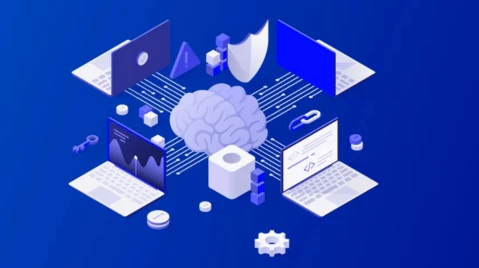In recent years, the banking industry has seen the emergence of new modes of financing, new business models, and the development of new technical innovations, all of which relies on the digital exchange of financial data.
With open banking and new legislations like Payment Services Directive Two (PSD2) in Europe and Account Aggregator in India, regulators are responding to the need for a simplified structure in which financial data can be exchanged.
In this post, I’ll explain how data virtualization can assist the banking industry in this complex setting.
The Payment-Services Environment

First, let’s look at some of the different types of entities that manage payment services today:
Account Information Service Provider (AISP): These businesses have permission to connect to a bank account and use account information to provide a service. Businesses that are AISPs, like OpenWorks, are authorized to “read-only” access of bank account information. Basically, they can look but not touch, which means that they cannot move a customer’s money. Services and tools that are associated with AISPs consist of price comparison, money management, quicker and more accurate access to financial products, and speeding up manual processes such as applying for a mortgage or a loan.
Payment Initiation Service Provider (PISP): These businesses can ask for permission to connect to a bank account and initiate payments on the customer’s behalf, from their bank account.
You might have several reasons for wanting a business to initiate payments for you. You might want to use an app that helps you manage money in your various savings and current accounts to ensure you never go over-drawn and don’t have to pay potentially hefty overdraft fees. It’s possible to expect this type of capability in retail, where you allow a company that you shop regularly online with to connect to your bank, so you get instant checkout and don’t need to re-enter card details for every transaction.
Account Aggregator (AA): The Reserve Bank of India’s (RBI) Account Aggregator framework went live on 2nd September 2021. The aim of this framework is to make financial data more accessible, easily shared, and protected. The approach is based on creating an intermediary entity referred to as an account aggregator. It a hybrid structure of AISP and PISP.
An account aggregator is an entity with an NBFC-AA license that helps an individual securely and digitally access and share information from one financial institution they have an account with to any other regulated financial institution in the AA network. Data cannot be shared without the consent of the individual.
An individual can choose from many account aggregators. The account-aggregator approach replaces the long terms-and-conditions form of “blank check” acceptance with a granular, step-by-step permission and control process for each use of your data, as the user has to provide the consent on what data can be shared and for how much time.
There are stringent rules for sharing the data to each of the appropriate parties, which makes the data landscape and process extremely complex. Account aggregators cannot see the data; they merely take it from one financial institution to another based on an individual’s direction and consent.
Contrary to the name, they cannot “aggregate” your data. Account aggregators are not like technology companies that aggregate your data and create detailed user profiles. The data they share is encrypted by the sender and can be decrypted only by the recipient. The end-to-end encryption and use of technology, like a “digital signature” makes the process much more secure than sharing paper documents.
How Data Virtualization Can Be Leveraged

One way to handle this complexity is by leveraging data virtualization. It can integrate data from disparate sources, from different locations, and from different formats, without having to replicate or move the data. Data virtualization creates a single “logical” data layer across all data assets and supports data services to deliver data to multiple types of applications and consumers.
Data virtualization is a modern data integration technique that uses an abstraction layer to hide the complexities of the underlying data ecosystem. This unified logical data layer helps to enforce and govern data security policies, right down to an extremely granular level. The supporting data catalog helps end users discover data within the organization and encourages data re-use and collaboration.
Banks also need to provide some data to AISPs in real time. Since banks would be dealing with multiple AISPs, a data virtualization layer would be key to managing these different access requirements.
Related Read: It’s Time for Banks to Lead with Insights-driven Innovation
The Benefits of Data Virtualization

Data virtualization can provide many benefits to account aggregators, including:
- Consistent data from multiple banks and standards.
- Significantly less time to on-board a new bank into the ecosystem.
- Protection of an individual’s information when sharing data.
- Flexible regulatory reporting.
- Data can be accessed and managed though a single centralized place.
- Data access can be monitored, tracked, and reported.
- Data is available in real time.
Related Brochure: Data Management & Analytics – Enabling Data-driven Decision Making
With the growing complexities of the data ecosystem and evolving requirements, data virtualization is an approach that not only enables banks to leverage thier exiting technology investments but also enables them to be agile, accelerating data delivery as well as data delivery initiatives.
This blog was originally published on datamanagementblog.com.







 Lending
Lending
 Transaction Banking
Transaction Banking Financial Inclusion
Financial Inclusion




























